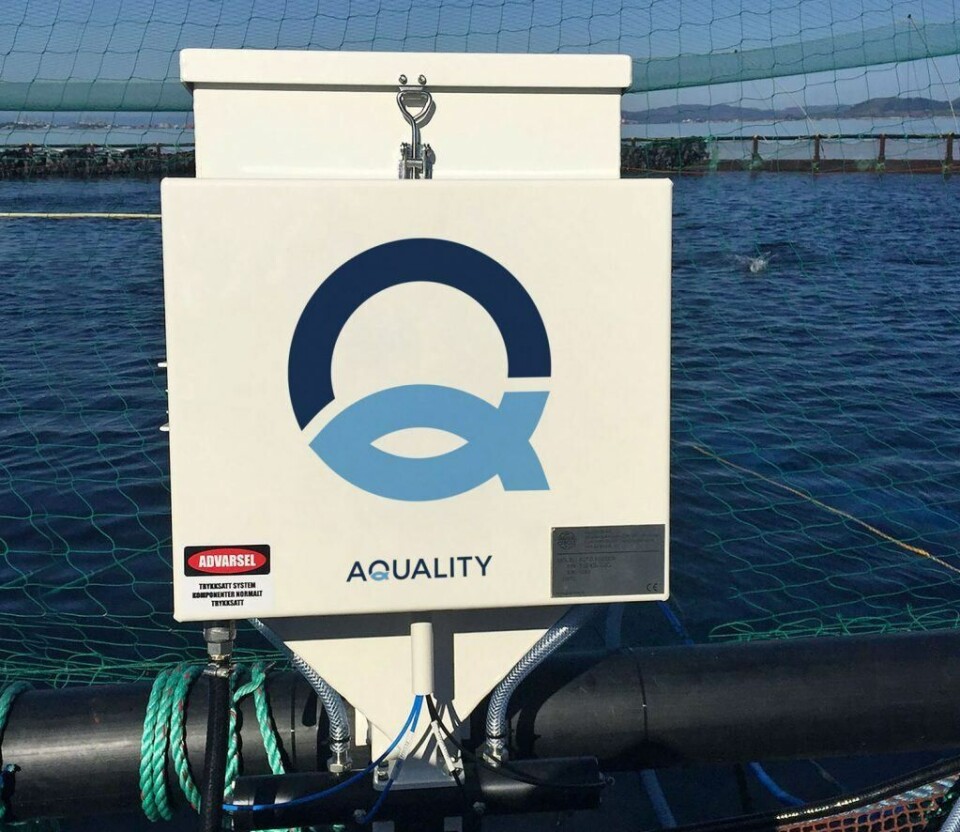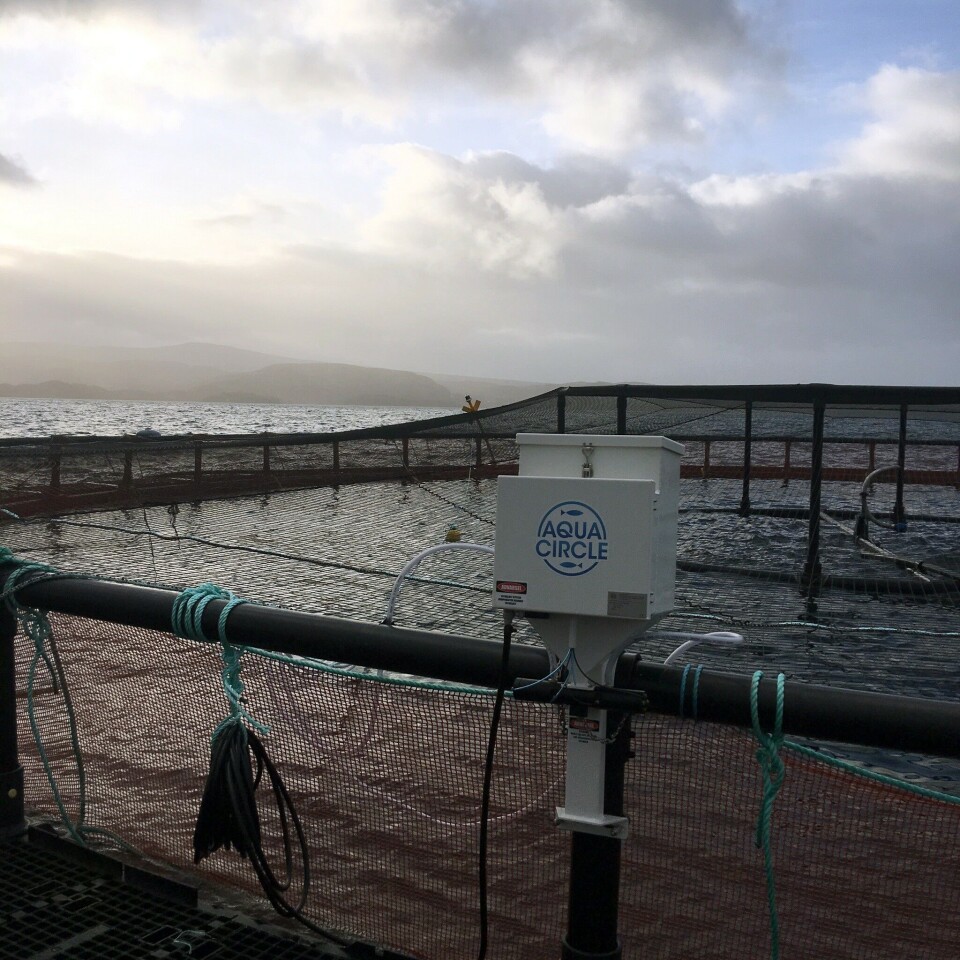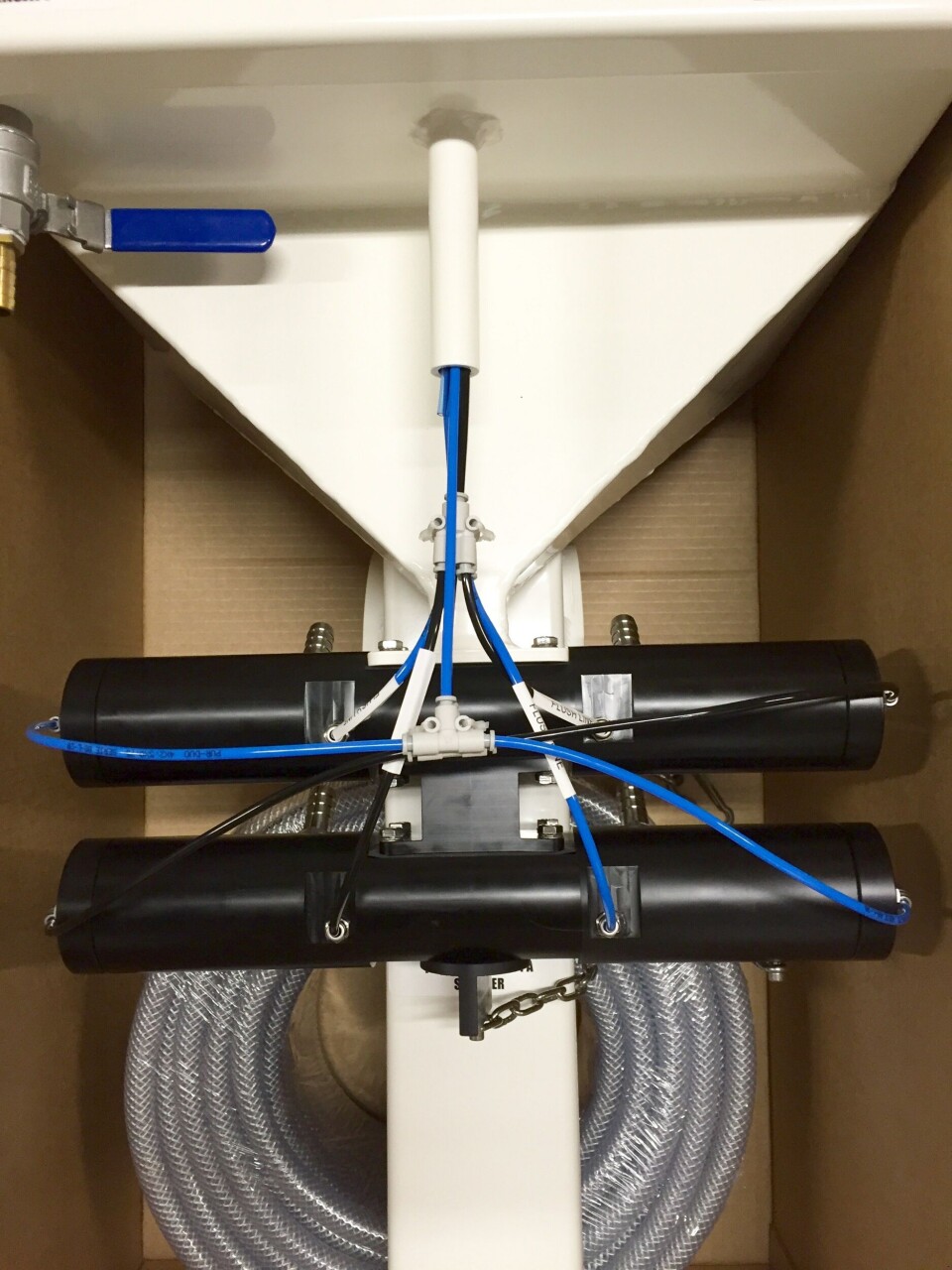
Cleanerfish feeders make Scottish debut
The first automated cleanerfish feeders have now arrived in Scotland, with the Scottish Salmon Company and Marine Harvest the first two firms to trial the devices.
Designed and built by the Norwegian company Aquality, the feeders, which are primarily designed for feeding lumpsuckers, are already proving popular in Norway. Tor Espen Skoglund, General Manager of the firm, outlines to Fish Farming Expert how the concept has evolved.

“The feeders work best for lumpsuckers, but also farmed ballan wrasse. They don’t work so well for wild-caught wrasse, however, as they’re not habituated to responding to automatic feeders,” he explains.
The devices can be used for a variety of diets and pellet sizes, but the current model is best suited to a particular size range, according to Tor Espen.
“They have been show to work well with Otohime, Skretting and Biomar cleanerfish formulations,” he says, “and work best with pellets up to 2mm, although there’s scope to develop a new version that is designed for pellets up to 3mm.”
“We’ve now delivered three to Scotland, the first of which is currently being trialled by the Scottish Salmon Company, while the second two are due to be installed at Marine Harvest’s site off Shuna [in Argyll] this week,” he continues.
“Marine Harvest were initially only going to take them on a trial basis, but they decided to buy them outright instead,” he explains.
The decision was no doubt supported by the fact that the feeders have been selling well in Norway for nearly 18 months. “The first feeders were launched in in June 2015,” Tor Espen continues, “and we’ve since sold 270 in Norway.”
Two choices

The feeders currently come in single and double cylinder versions.
“The single cylinder system can feed two steel cages or one circular pen, while the double cylinder has the capacity to feed four steel cages,” Tor Espen says.
The standard price for the feeders is currently NOK 30,000 (around £2800) apiece, but Tor Espen believes this could go down over time.
“We’re making the feeders locally in Norway at the moment – this not only allows us to ensure the quality of production but also to quickly adapt and evolve the design. That way we can make any alterations within a week of having the idea,” he explains.
“In time, however – when we start to produce the feeders in greater volume – we may look into producing them in Eastern Europe, which would bring the cost down,” he adds.























































